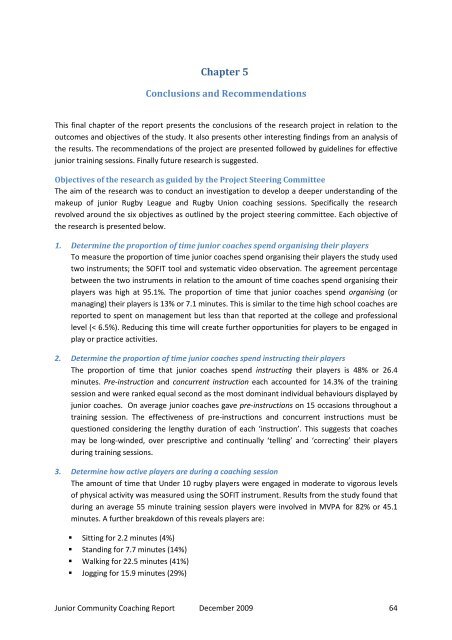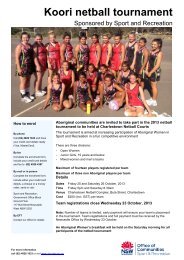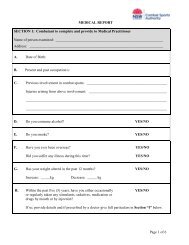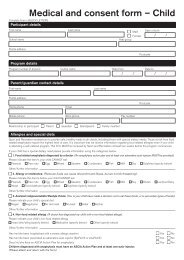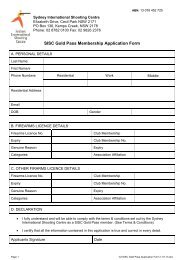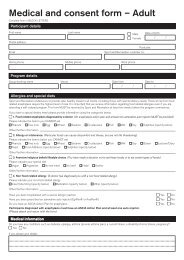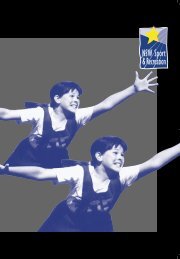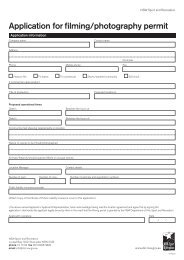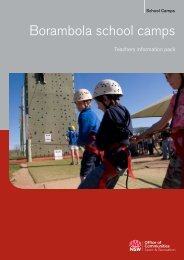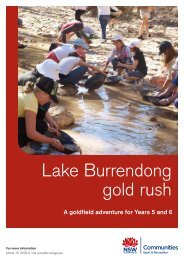Community Junior Sport Coaching final report - 2009
Community Junior Sport Coaching final report - 2009
Community Junior Sport Coaching final report - 2009
You also want an ePaper? Increase the reach of your titles
YUMPU automatically turns print PDFs into web optimized ePapers that Google loves.
Chapter 5<br />
Conclusions and Recommendations<br />
This <strong>final</strong> chapter of the <strong>report</strong> presents the conclusions of the research project in relation to the<br />
outcomes and objectives of the study. It also presents other interesting findings from an analysis of<br />
the results. The recommendations of the project are presented followed by guidelines for effective<br />
junior training sessions. Finally future research is suggested.<br />
Objectives of the research as guided by the Project Steering Committee<br />
The aim of the research was to conduct an investigation to develop a deeper understanding of the<br />
makeup of junior Rugby League and Rugby Union coaching sessions. Specifically the research<br />
revolved around the six objectives as outlined by the project steering committee. Each objective of<br />
the research is presented below.<br />
1. Determine the proportion of time junior coaches spend organising their players<br />
To measure the proportion of time junior coaches spend organising their players the study used<br />
two instruments; the SOFIT tool and systematic video observation. The agreement percentage<br />
between the two instruments in relation to the amount of time coaches spend organising their<br />
players was high at 95.1%. The proportion of time that junior coaches spend organising (or<br />
managing) their players is 13% or 7.1 minutes. This is similar to the time high school coaches are<br />
<strong>report</strong>ed to spent on management but less than that <strong>report</strong>ed at the college and professional<br />
level (< 6.5%). Reducing this time will create further opportunities for players to be engaged in<br />
play or practice activities.<br />
2. Determine the proportion of time junior coaches spend instructing their players<br />
The proportion of time that junior coaches spend instructing their players is 48% or 26.4<br />
minutes. Pre-instruction and concurrent instruction each accounted for 14.3% of the training<br />
session and were ranked equal second as the most dominant individual behaviours displayed by<br />
junior coaches. On average junior coaches gave pre-instructions on 15 occasions throughout a<br />
training session. The effectiveness of pre-instructions and concurrent instructions must be<br />
questioned considering the lengthy duration of each ‘instruction’. This suggests that coaches<br />
may be long-winded, over prescriptive and continually ‘telling’ and ‘correcting’ their players<br />
during training sessions.<br />
3. Determine how active players are during a coaching session<br />
The amount of time that Under 10 rugby players were engaged in moderate to vigorous levels<br />
of physical activity was measured using the SOFIT instrument. Results from the study found that<br />
during an average 55 minute training session players were involved in MVPA for 82% or 45.1<br />
minutes. A further breakdown of this reveals players are:<br />
Sitting for 2.2 minutes (4%)<br />
Standing for 7.7 minutes (14%)<br />
Walking for 22.5 minutes (41%)<br />
Jogging for 15.9 minutes (29%)<br />
<strong>Junior</strong> <strong>Community</strong> <strong>Coaching</strong> Report December <strong>2009</strong> 64


